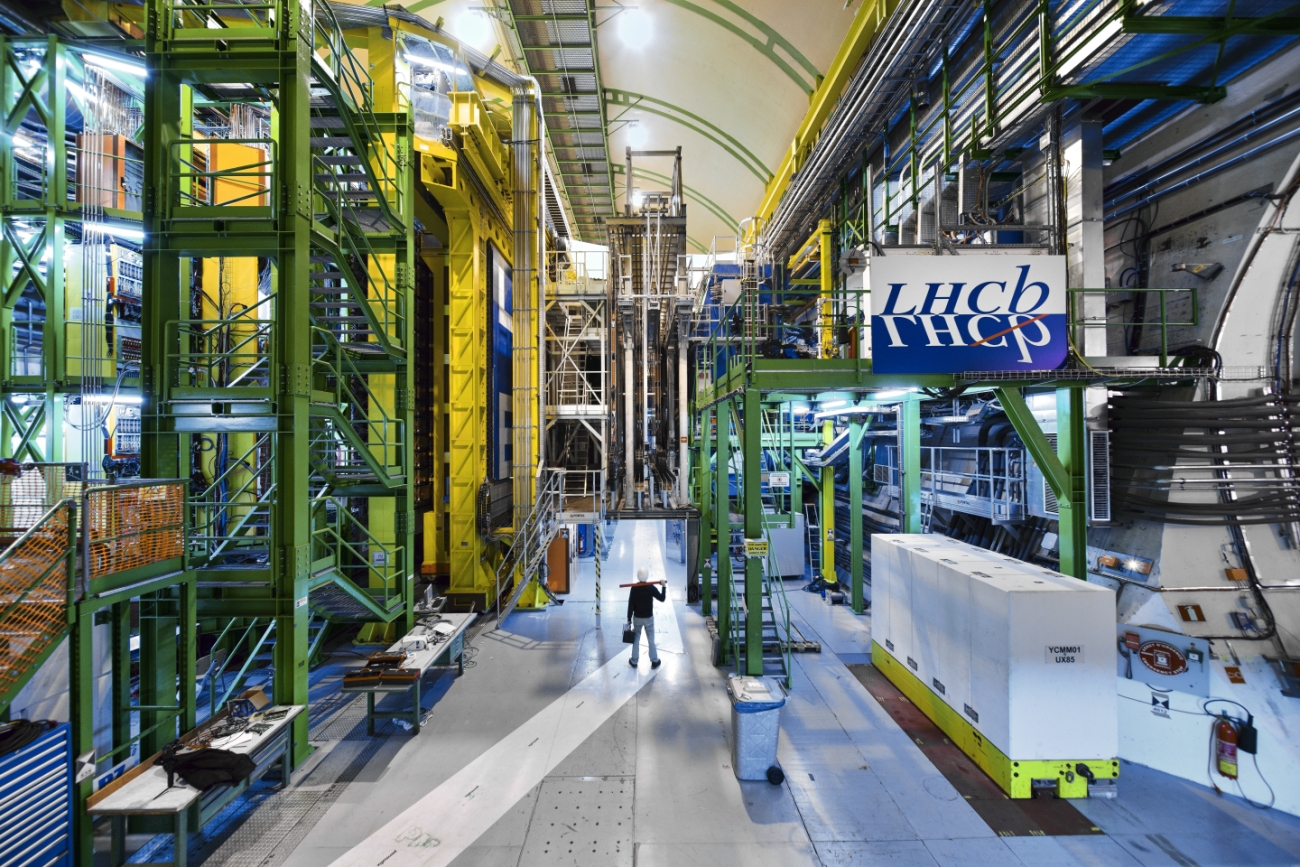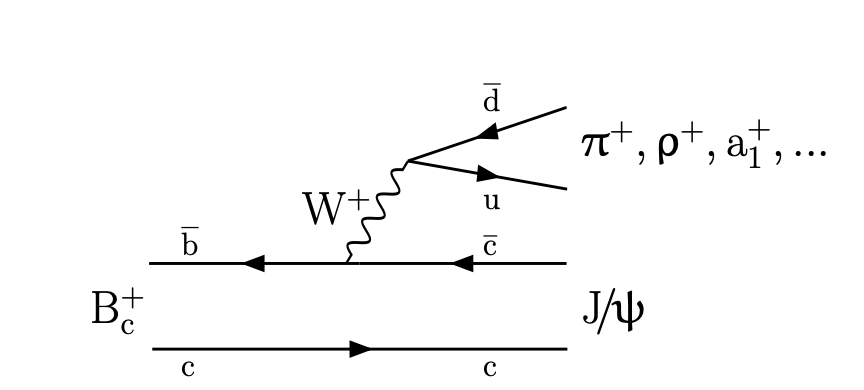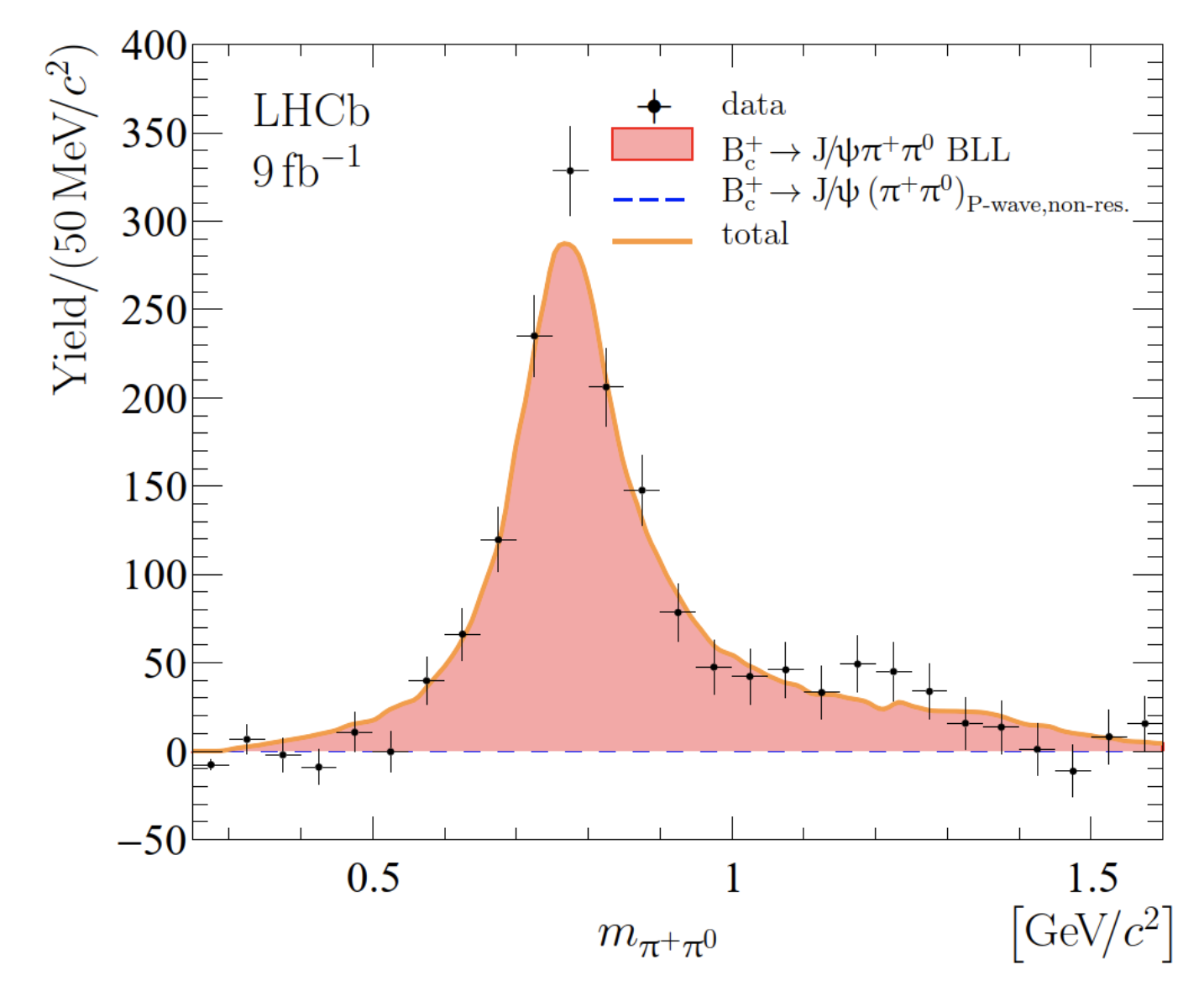Scientists Observe a New Way for Heavy Mesons to Decay

Researchers working on the LHCb experiment at CERN have achieved a breakthrough in understanding a subatomic particle called the Bc+ meson. They have observed, for the first time, a specific way this meson decays, providing valuable insights into the fundamental forces that govern our universe.
The Bc+ meson stands out in the world of subatomic particles due to its heavyweight composition. It's made of two heavy quarks: a bottom (b) quark and a charm (c) quark. This makes it the heaviest meson (a composite particle made of a quark-antiquark pair) that can only decay through a process called weak interaction. In this process, one of the heavy quarks decays, while the other acts as a spectator.
The newly observed decay involves transforming the Bc+ meson. It breaks down into a charmonium particle (J/ψ) and two lighter particles: a positively charged pion (π+) and a neutral pion (π⁰). This is the simplest way a Bc+ meson can decay into charmonium and an even number of lighter particles. The decay process shows a contribution from an intermediate particle, a ρ+ meson that forms for a brief moment before decaying to the pair of pions.

Figure 1: Diagram for the decays of the BC+ meson into the J/ψ meson and light hadrons.
This discovery holds significance for several reasons. First, it fills a theoretical gap. This decay mode was predicted by theorists but never observed before. Precise measurements of this decay will allow scientists to compare theory and experiment, refining our understanding of the weak interaction. More specifically, measurements of e+e– annihilation into two pions in the ρ mass region (like in the Bc decay reported today) are crucial for the prediction of results from the Fermilab g-2 experiment in the framework of the Standard Model. A precise measurement of the Bc+ →J/ψ π+π0 decay allows a more profound understanding of its possible contribution as a background source for the study of other decays of Bc mesons, as well as rare decays of B0 mesons.
The image above shows the J/ψ π+π0 mass spectrum, which is clearly clustered around the Bc+ mass. The π+π0 mass combination of pions from this decay clusters around the ρ meson mass, as shown in the image.

Second, the decay of the Bc+ meson into J/ψ and two pions has connections beyond this specific particle. It is related to other fundamental processes, such as the decay of the tau lepton and the annihilation of electrons and positrons. Studying this decay helps us understand these other processes better.
Finally, this decay could potentially mimic other, rarer decays of Bc+ mesons and B0 mesons. Understanding this decay mode will improve the ability of scientists to identify and study these rare decays more effectively.

LHCb physicists measured the ratio of the branching fraction of the new decay to that of the Bc+ → J/ψ π+ and obtained a value of 2.80±0.15±0.11±0.16. The measured ratio has been calculated by various theorists over the last 30 years. Now these predictions can be compared with experimental measurements. The comparison of the LHCb result with these calculations is shown in the right-hand image above. Most of the predictions are confirmed by this new measurement.
The success of this research is due in part to the capabilities of the LHCb experiment. The large amount of data collected by the LHCb, combined with its powerful detector, allows scientists to observe rare and complex particle interactions like this decay in exquisite detail. This discovery adds to the impressive list of Bc+ meson decay modes observed by LHCb. With 18 out of the 20 known decay modes discovered by this experiment, LHCb is leading the way in unravelling the secrets of this fascinating particle.
Read more in the LHCb paper.
